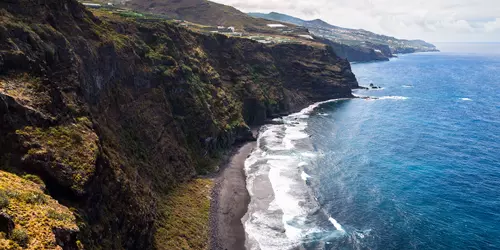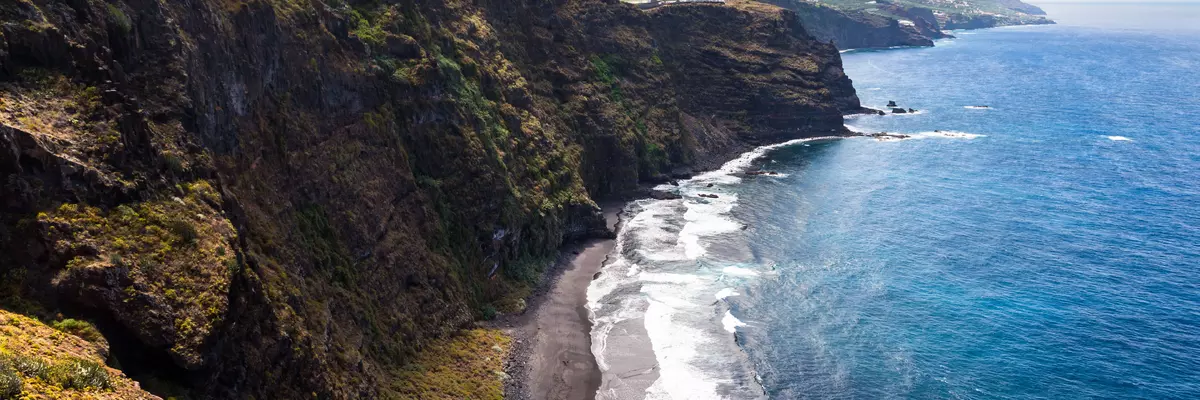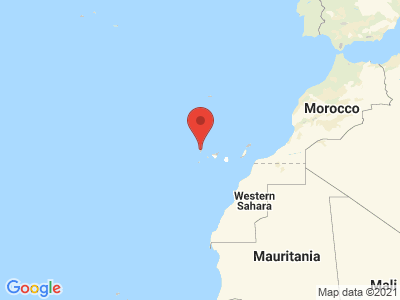Climate Table La Palma
Jan | Feb | Mar | Apr | May | Jun | Jul | Aug | Sep | Oct | Nov | Dec | |
|---|---|---|---|---|---|---|---|---|---|---|---|---|
| Max. Temperature | 17° | 17° | 18° | 18° | 19° | 20° | 22° | 23° | 23° | 21° | 19° | 17° |
| Min. Temperature | 12° | 12° | 12° | 12° | 13° | 15° | 16° | 17° | 17° | 17° | 15° | 13° |
| Sun Hours | 4 | 5 | 5 | 5 | 5 | 5 | 7 | 7 | 5 | 4 | 3 | 4 |
| Water Temperature | 19° | 18° | 18° | 19° | 20° | 21° | 22° | 23° | 23° | 23° | 22° | 20° |
| Rain Days | 7 | 6 | 4 | 2 | 1 | 1 | 0 | 0 | 1 | 6 | 8 | 9 |
From the point of view of geography, the island is the youngest island of the Canary Islands and is also known for its extensive forests. Therefore one calls it also gladly "Isla Verde", which means nothing else than "Green island". La Palma is known and loved for its picturesque surroundings. From the heavy rush of tourists from all over the world, the charming island is largely spared and therefore remains a place for those seeking tranquility. All year round the sun is in the foreground and conjures up smiling faces. The original character of the green island is preserved and gives it a special flair. Volcanism takes a lot of space on the Isla and attracts interested public. Craters are visible and can be viewed. The Caldera de Taburiente National Park, for example, has a crater landscape open to the west. It exists since 1954 and has a circumference of 28 kilometers. The term caldera is from the Spanish and means cauldron. Cumbre Vieja is also of volcanic origin and a famous part of the volcanic route. Furthermore, the steep slopes and the different altitudes give the island its shape. The surface of the Isla is 708 km2 and has 70 local plant species. Laurel and pine forests cross the magnificent vegetation and in the so-called coastal zone you can admire the beach lilac.
The climate year of La Palma
The tourism of Isla La Palma is far from mass tourism. The island is and remains a special place of tranquility and does not necessarily attract the very young public. In 1890 there were already the first hotels and lodgings. Tourists are also an important source of income on La Palma and are therefore welcome. In contrast to Tenerife and Gran Canaria, La Palma has only benefited from the visitors since the expansion of its own airport. The package traveler could then finally head for the Isla and enjoy the benefits of the island. In 2013, the number of guests was about 104,000 and thus makes up only one percent with respect to the other, more famous islands. Especially the sportive offer is very popular with guests. Mountain bike tours and diving trips are increasingly being booked, and horseback riding excursions also delight tourists. Extreme sports enthusiasts are also offered something special. Flying with paragliders certainly offers the most beautiful view from above. Beachcombers can relax on the unique beaches of Tazacorte, Puerto Naos and Los Cancajos. They have been awarded the EU blue flag and thus stand for upscale quality. EU subsidies ensure that old fincas are restored and thus preserved. After all, the typical landscape architecture makes the charm of La Palma and traditional accommodations are highly sought after by tourists.
General information about La Palma
The climatic year of La Palma is characterized by warmth throughout. The Isla is divided into two climate zones. Responsible for this, are the already named altitudes of up to 2000 meters. In the northeast the trade wind clouds keep close to each other. In the southwest of the island, dryness and a bright blue sky prevail. From October to January, locals and travelers have to make do with 3-4 hours of sunshine a day. From February to September the island offers the most sun. Up to 7 hours a day are normal then. The most rainy days are recorded in November and December, whereas in summer it hardly rains.


